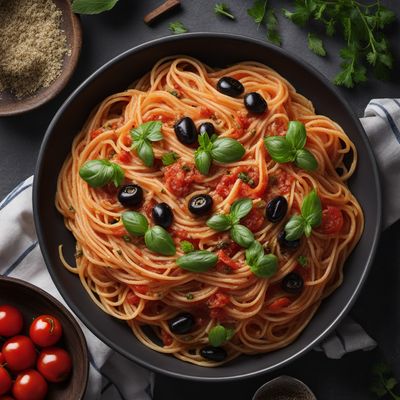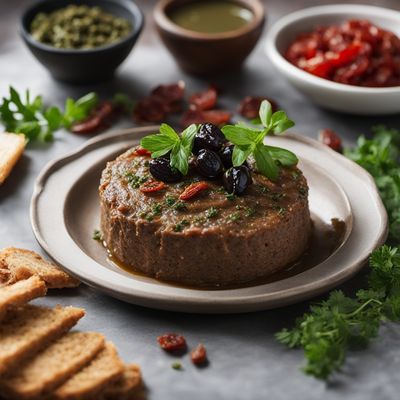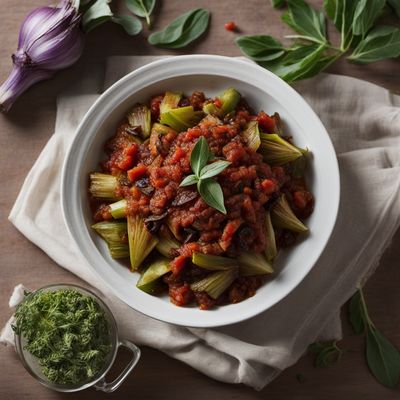
Ingredient
Capers buds
"The Zesty Delight: Unveiling the Tangy World of Capers"
Capers buds are small, green flower buds that are harvested from the caper bush, scientifically known as Capparis spinosa. These buds are typically pickled in vinegar or salt to enhance their unique flavor. Capers have a distinctive tangy and briny taste, with a slightly floral and peppery undertone. They have a firm texture and are often described as crunchy or crisp. Capers are small in size, ranging from pea-sized to olive-sized, and are usually sold in jars or cans.
Origins and history
Capers have a rich history dating back thousands of years. They are believed to have originated in the Mediterranean region, particularly in areas such as Greece, Italy, and Spain. Capers have been used in Mediterranean cuisine for centuries and were highly valued by ancient civilizations such as the Greeks and Romans. They were even mentioned in the Bible and were considered a delicacy in ancient Egypt. Today, capers are widely cultivated in various countries around the world, including France, Morocco, and Turkey.
Nutritional information
Capers are low in calories and fat, making them a healthy addition to meals. They are a good source of antioxidants, vitamins A, K, and C, as well as minerals like iron and calcium.
Allergens
Capers are generally considered safe for consumption and are not commonly associated with allergies. However, individuals with a known allergy to plants in the Capparaceae family, such as mustard or cabbage, may also be allergic to capers.
How to select
When selecting capers, look for buds that are firm and plump. Avoid capers that appear soft or mushy, as they may have lost their freshness. Additionally, check the label for any added preservatives or artificial ingredients, and opt for capers that are packed in brine or salt for the best flavor.
Storage recommendations
To maintain the freshness and quality of capers, store them in a cool, dark place, such as the refrigerator. Once opened, transfer the capers to an airtight container and keep them submerged in their brine or salt solution. Properly stored capers can last for up to a year.
How to produce
Capers can be grown in your own garden or in pots. They require a sunny location and well-drained soil. The caper bush is a perennial plant that can tolerate drought and poor soil conditions. Harvest the buds when they are still small and green, before they open into flowers. Rinse the buds thoroughly and then pickle them in vinegar or salt to preserve their flavor.
Preparation tips
Before using capers, rinse them under cold water to remove excess salt or brine. They can be used whole or chopped, depending on the desired texture. Capers are a versatile ingredient and can be added to a variety of dishes, such as salads, pasta sauces, fish dishes, and even cocktails. They pair well with ingredients like lemon, garlic, olives, and tomatoes, enhancing the overall flavor profile of the dish.
Culinary uses
Capers are commonly used in Mediterranean and Italian cuisines. They are often added to pasta sauces, such as puttanesca or piccata, to provide a tangy and briny flavor. Capers are also a popular ingredient in salads, dressings, and marinades. They can be used to garnish fish dishes, sandwiches, or even pizza. Their unique flavor adds a delightful twist to various recipes.
Availability
Capers are commonly available in Mediterranean countries, such as Italy, Greece, and Spain. They are also cultivated in other regions, including France, Morocco, and Turkey. Capers can be found in most grocery stores, supermarkets, and specialty food stores worldwide.
More ingredients from this category
Recipes using Capers buds » Browse all

Apulian-style Hayashi Rice
Saporito Hayashi Rice: A Taste of Apulia in Every Bite

Tonno alla Genovese with Lemon and Capers
Mediterranean Delight: Lemon-Caper Tuna Genovese

Authentic French Olive Tapenade
Mediterranean Delight: Savory Olive Tapenade

Acqua Pazza with Mediterranean Flavors
Mediterranean Delight: Acqua Pazza with a Twist

Savory Mallorcan Sopes with a Mediterranean Twist
Mediterranean Delight: Mallorcan Sopes with a Flavorful Twist

Vegan Fish and Chips
Crispy Tofu and Potato Wedges

Spaghetti alla Carrettiera with a Twist
Sicilian-inspired Spaghetti alla Carrettiera: A Burst of Flavors

Colombian Chicken Ajiaco with Avocado and Corn
Hearty Colombian Chicken Ajiaco: A Taste of Comfort and Tradition

Apulian-style Pâté
Savor the Flavors of Apulia with this Delectable Pâté

Pizza di Scarola alla Napoletana
Savory Escarole Pizza: A Taste of Naples

Occitan-style Holstein Schnitzel
Savor the Flavors of Occitan with Holstein Schnitzel

Crispy Artichoke Caponata
Mediterranean Delight: Crispy Artichoke Caponata
